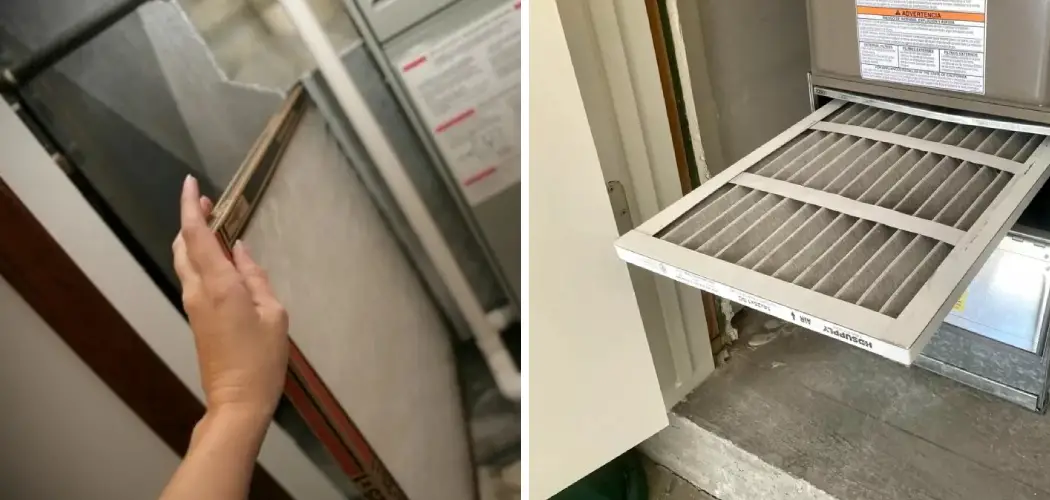Maintaining a clean furnace filter is crucial for the optimal performance of your HVAC system and for ensuring healthy indoor air quality. Various furnace filters, such as pleated and HEPA filters, offer different levels of air filtration, catering to the need for cleaner air in our homes. Pleated filters, known for their increased surface area, effectively trap and hold a significant amount of dust, pollen, and other airborne particles.
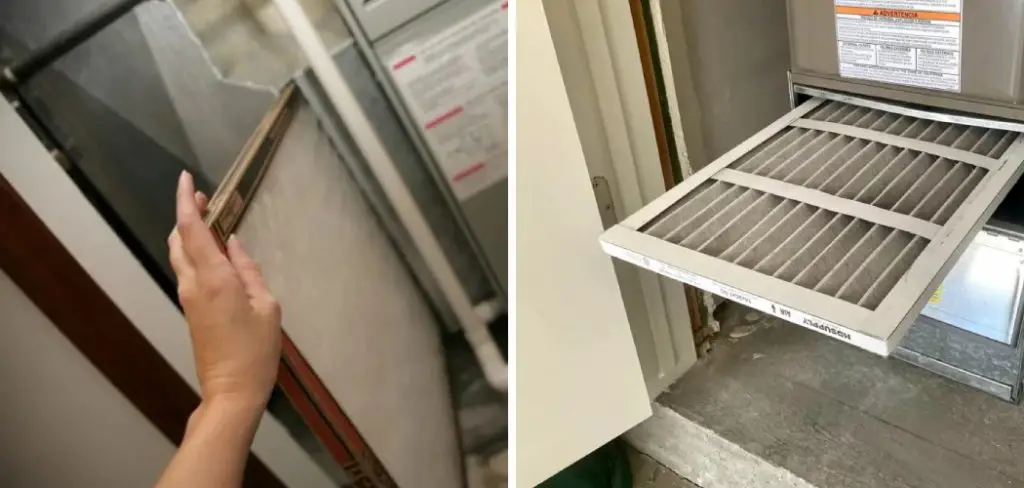
HEPA filters, on the other hand, provide an even higher level of filtration, capable of capturing minute particles for those particularly concerned about indoor air pollutants. Regularly locating and replacing or cleaning your furnace filter is essential.
This practice maximizes the efficiency of your heating and cooling system and contributes to a healthier living environment by reducing allergens and dust. This guide starts with learning how to locate furnace filter, a fundamental step in furnace maintenance that ensures the longevity of your HVAC system and supports a cleaner, healthier home.
The Role of Furnace Filters
Furnace filters play a critical role in maintaining indoor air quality by trapping dust, allergens, pollen, and other airborne particles before they enter your living space. These filters act as a barrier, preventing particles from circulating through the air and settling on surfaces within your home. The benefits of keeping furnace filters clean are numerous.
Firstly, clean filters contribute significantly to improved air quality, which can lead to reduced symptoms for those suffering from allergies or asthma. Secondly, a clean filter allows your HVAC system to be more efficient.
This helps maintain a consistent temperature throughout your home and leads to lower energy bills due to the system not having to work as hard to push air through a dirty filter. Lastly, maintaining clean filters can extend the lifespan of your furnace. Dust buildup on components like the blower fan can cause the system to work harder, potentially leading to premature wear and failure.
Types of Furnace Filters
There are several common types of furnace filters available on the market, each designed to meet different needs and budgets:
- Fiberglass Filters: These are the most basic and low-cost option, offering lower efficiency. They are designed to protect the furnace but do less to improve indoor air quality.
- Pleated Filters: These filters have a larger surface area to trap more particles and are known for better efficiency and a longer lifespan than fiberglass filters.
- HEPA Filters: HEPA stands for High Efficiency Particulate Air filters. They offer the highest level of efficiency and are ideal for individuals with allergies or asthma, as they can capture the smallest particles.

Choosing the right filter type for your furnace is important. Factors to consider include the specific needs of your household, such as allergy concerns and your budget. Each filter type offers distinct advantages in terms of cost, efficiency, and filtration capability, making it essential to weigh your options carefully.
How to Locate Furnace Filter: A Beginner’s Guide
The placement of a furnace within a home varies but commonly includes areas such as the basement, utility closet, or attic, depending on the home’s design and heating needs. A furnace can usually be identified by its large metal cabinet, visible vents, and connections such as a gas line or electric supply, marking it distinctly from other appliances.
If you are unsure of your furnace’s location, there are several strategies you can employ to find it. One effective method is to consult your home’s blueprints or owner’s manual, which typically outlioutlinese the location of major systems, including the HVAC system. Another practical approach is to trace the air vents in your home back to their source, as all vents lead directly to the furnace.
These vents are usually found on floors, walls, or ceilings and follow a path back to the heart of your home’s heating system. Discovering your furnace’s location is the first step in maintaining it, as knowing where your furnace is allows you to regularly check and replace the filter, ensuring your home remains a comfortable and healthy environment.
Understanding Furnace Design and Filter Access
Understanding the design and configuration of your furnace is crucial for locating and maintaining the furnace filter efficiently. The two primary furnace configurations found in homes are upflow and downflow furnaces, each with its unique design and filter access points.
A. Upflow Furnaces
Upflow furnaces are designed so that the hot air rises and is distributed throughout the home via ceiling or high-wall vents. This configuration takes advantage of the natural tendency for warm air to rise, making it an efficient choice for heating.
In upflow furnaces, the cold air is drawn in at the bottom of the unit, heated by the furnace, and homeowners need to familiarize pushed upward. The filter access panel in upflow furnaces is typically located on the bottom door or near the blower compartment, which is at the lower part of the furnace.
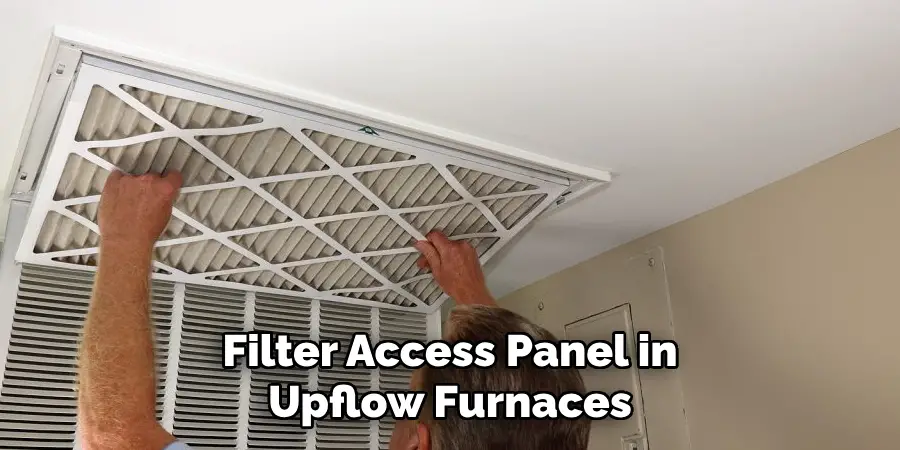
Accessing the filter in an upflow furnace involves removing the bottom door or panel, which should be done carefully to avoid disrupting the electrical connections and components inside. Regular checking and replacing of the filter are essential for maintaining the system’s efficiency and ensuring clean air distribution throughout the home.
B. Downflow Furnaces
Downflow furnaces operate by blowing hot air downwards into the living space through vents located on the floor or lower on the walls. This design is particularly suitable for homes with basements or for installation in attics where the heated air can travel down into the home. In downflow furnaces, the air is drawn in at the top of the unit, passes through the heat exchanger, and then forced down and out into the living areas.
The filter access panel for downflow furnaces can vary in location depending on the specific design and model of the furnace; it may be found on the bottom door, the top door (if the blower is placed above the heat exchanger), or on the side of the unit.
Homeowners need to familiarize themselves with their specific furnace model to properly locate and access the filter. Regular maintenance of the filter in downflow furnaces is critical for ensuring that the system operates efficiently and that the air quality in the home is healthy and free of pollutants.
Signs You Need to Replace Your Furnace Filter
Consistent maintenance of your furnace’s filter is crucial in maintaining your heating system’s efficiency and ensuring the air quality in your home remains high. Typically, high-efficiency furnace filters should be replaced every month, while standard filters can last up to three months.
However, the exact frequency can vary based on factors such as the type of filter, the usage of your heating system, and if there are pets or individuals with allergies in the household. Recognizing the signs that your furnace filter needs replacing is key to preventing unnecessary wear on your system and keeping your indoor air clean.
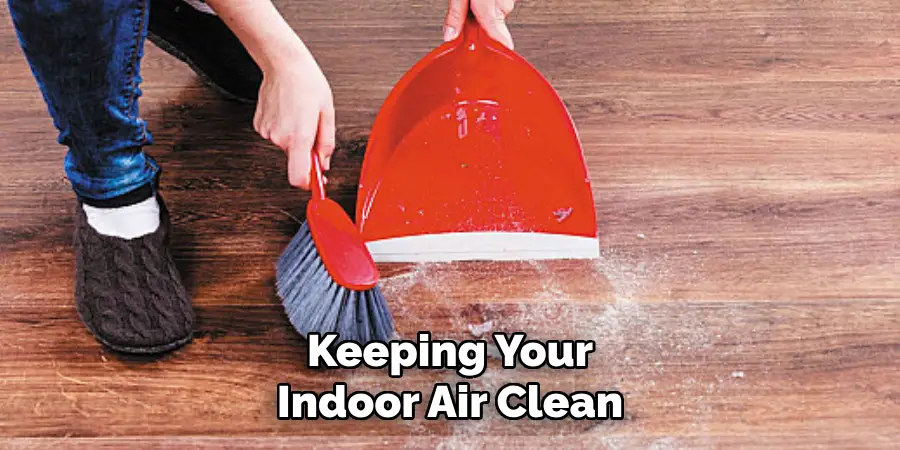
One clear indication that your furnace filter requires attention is the visible accumulation of dust and debris on the filter itself. Over time, dust particles can clog the filter’s mesh, making it difficult for air to pass through, thus impeding the system’s efficiency. Another common sign is experiencing reduced airflow from your vents, which can often be attributed to a dirty or clogged filter obstructing the passage of air.
An increase in dust and allergens circulating within your home can also suggest that your furnace filter is no longer effectively trapping these particles. If individuals in your home begin to suffer more frequently from allergy symptoms or if dust accumulates on surfaces more quickly than usual, it’s a strong indication that the filter is due for a replacement.
Lastly, an uptick in your energy bills without a corresponding increase in usage can signal that your furnace is working harder than necessary to circulate air through a dirty filter. This inefficiency costs more money and can lead to premature breakdowns and repairs due to the added strain on your system.
In summary, staying vigilant for signs of a needed filter replacement, such as visible dust buildup, reduced airflow, increased indoor allergens, and higher energy costs, can help maintain your furnace’s longevity and performance. Adhering to the recommended replacement schedule and monitoring your furnace’s operation can prevent issues before they arise, ensuring your home remains a comfortable and healthy environment.
Identifying Your Furnace Filter Access Panel
Identifying the furnace filter access panel is a straightforward process, as most designs consider user accessibility for regular maintenance. Depending on the furnace’s overall design, the access panel is typically located on the bottom, top, or side of the unit.
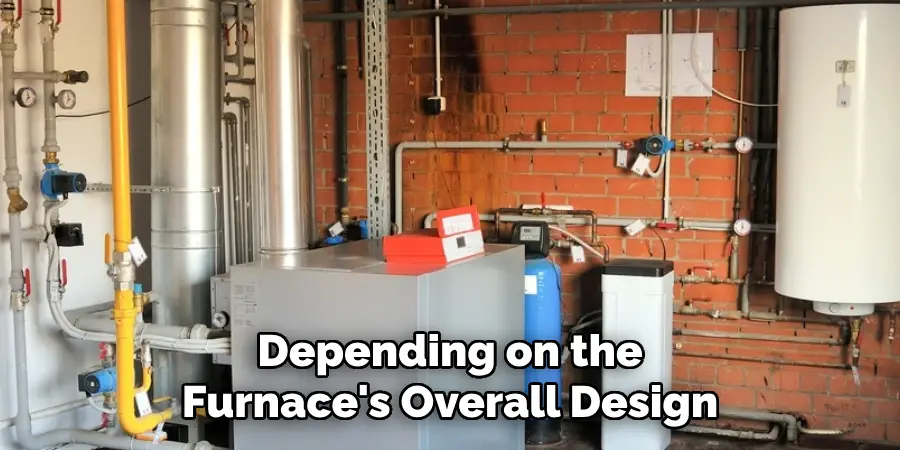
Manufacturers often use latches, screws, or simple clips to secure these panels, allowing for easy removal and replacement of the filter. Additionally, some access panels might be clearly labeled with “Filter” or “Air Filter” to aid in quick identification, simplifying the process for homeowners.
A. Tips for Identifying the Filter Access Panel
When locating the filter access panel on your furnace, look for a rectangular panel that seems different or distinct from the rest of the furnace exterior. This panel often has a slightly different appearance in terms of finish or color or may feature a label indicating its purpose.
Another useful tip is to feel for cool air emanating from a panel, as this can indicate where the air enters the unit and, hence, where the filter is likely located. If these methods do not yield results, consulting the furnace manual or the manufacturer’s website can provide specific instructions tailored to your model, ensuring you can find and access the filter panel with confidence.
B. Safety Precautions While Replacing the Filter
Before replacing the furnace filter, it’s imperative to ensure your safety and system integrity. Begin by turning off the furnace at the thermostat, completely cutting power to the unit to avoid any accidental startups while the filter is being changed. This step is crucial for preventing injury or damage to the furnace.
It’s also advisable to wear gloves when handling the old filter, as it may be laden with dust and other particulates. These precautions help minimize direct exposure to potential allergens and irritants, making the filter replacement process safer for individuals susceptible to respiratory problems or skin irritation. Following these safety measures not only protects you but also ensures your furnace’s longevity and efficient operation.
Removing and Replacing the Old Filter
A. Removing the Old Filter
To safely remove the old filter from your furnace, begin by identifying the access panel as previously described. This panel is usually secured by latches, screws, or clips designed for easy user access. Carefully unscrew or unlatch these fasteners, taking note of their placement for later reassembly. Upon opening the access panel, you’ll find the old filter snugly placed within its slot.
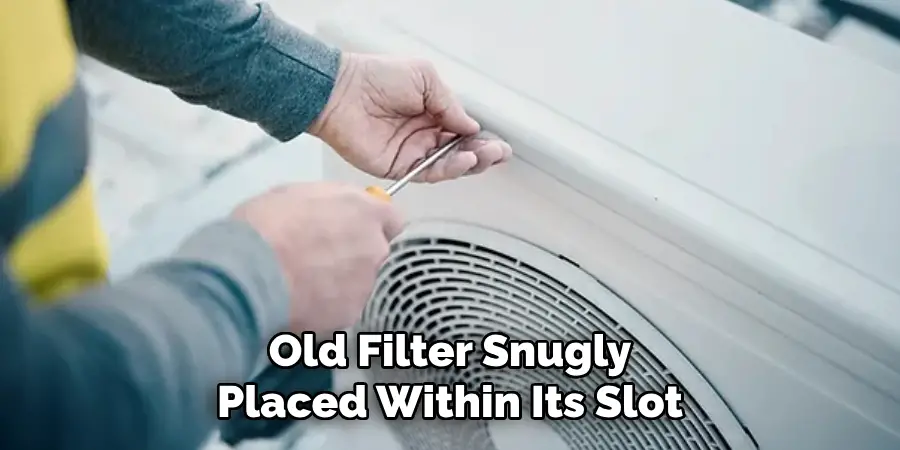
It’s crucial to grasp the filter’s frame to remove it, avoiding direct contact with the filter media, which can be full of dust and contaminants. Once extracted, place the old filter into a sealed plastic bag. This minimizes the spread of dust and allergens into your home during disposal. Ensuring that this step is performed with care will prevent unnecessary mess and potential exposure to irritating particles.
B. Installing the New Filter
When installing a new filter, the first step is to ensure that it is of the correct size for your furnace. Incorrectly sized filters can lead to inefficiencies in system operation and may allow dust and allergens to bypass the filter altogether.
The correct dimensions can usually be found on the old filter or by consulting the furnace’s manual. Pay close attention to the airflow direction when inserting the new filter, which is typically indicated by an arrow on the filter frame. This arrow should point toward the furnace, aligning with the direction that air flows through the system.
If you’re unsure, reference the furnace’s manual or look for any markings on the furnace itself that indicate airflow direction. Proper installation of the filter not only maximizes the efficiency of your furnace but also ensures that the air in your home remains clean and healthy. Following these steps carefully will help maintain the performance of your heating system and contribute to a comfortable indoor environment.
That’s it! You’ve now learned how to locate furnace filter access panels, identify when it’s time to replace your filter, and safely remove and install a new one. Remember that regular maintenance is essential for keeping your furnace running smoothly, efficiently, and effectively.
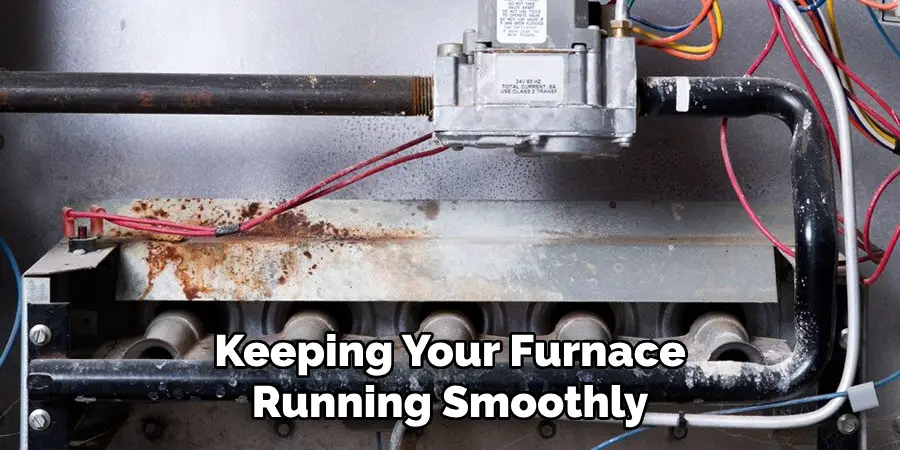
By adhering to the recommended replacement schedule and following safety precautions while handling filters, you can ensure that your home remains a comfortable and healthy environment all year round. So don’t forget to check your furnace filter periodically and replace it as needed, keeping your system in optimal condition for years to come.
Securing the Filter Access Panel and Turning the Furnace Back On
After successfully installing the new filter, it’s crucial to replace the furnace filter access panel correctly to ensure the unit operates safely and efficiently. Align the panel back into its original position and secure it using the latches, screws, or clips you previously removed.
It’s advisable to double-check that the panel is firmly in place, as a loose panel can lead to operational issues, including unfiltered air entering the system or the furnace working harder to circulate air.
Before you consider the task complete, verify that the panel doesn’t display any signs of improper alignment or gaps. Such discrepancies could indicate that the panel isn’t properly secured, which might affect your furnace’s performance. Once you’re satisfied that everything is correctly assembled, it’s time to turn the furnace back on.
Reactivate your furnace by going to the thermostat and switching it on. Allow the system a few minutes to restart; during this period, it’s normal to hear the furnace initiating its cycle. This brief waiting period ensures that the furnace fully engages and begins to circulate air efficiently through the newly installed filter.
Restarting the furnace not only signifies the completion of your maintenance task but also restores warmth and comfort to your home while ensuring the air quality remains high.
Additional Tips for Furnace Filter Maintenance
A. Labeling Replacement Dates
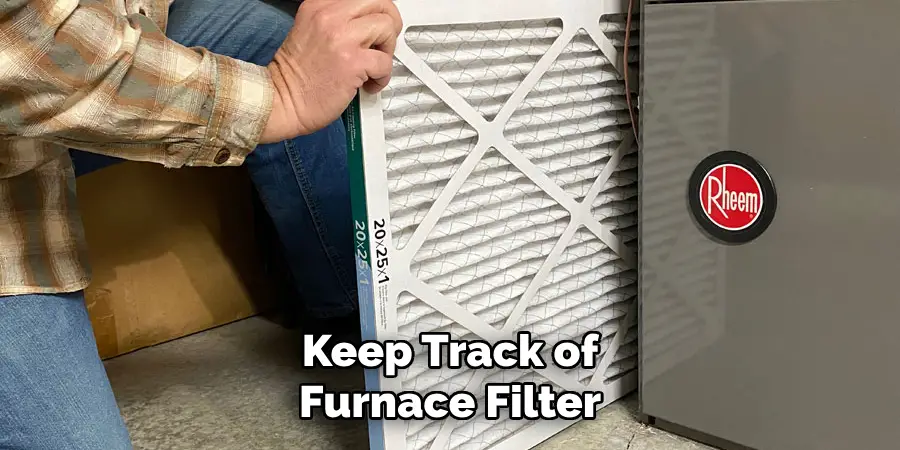
An effective way to keep track of furnace filter maintenance is by writing the replacement date directly on the new filter before installing it. This practice serves as a convenient reminder of when the filter was last changed and helps in planning future replacements. Taking a moment to jot down the date ensures that filter changes occur at proper intervals, maintaining the system’s efficiency and indoor air quality.
B. Scheduling Filter Changes
Consider setting calendar reminders or subscribing to a filter replacement service to ensure that filter changes are not overlooked. These methods provide timely notifications when it’s time to replace your filter, thereby preventing any lapse in your system’s performance. Calendar reminders can be set up on your phone or computer, while many subscription services conveniently deliver the correct size filters to your doorstep at predetermined intervals.
C. Choosing the Right Filter Type
Selecting the appropriate filter type is crucial for achieving a balance between air quality and system efficiency. It’s important to consider factors such as the filter’s MERV rating, which indicates its ability to trap various sizes of particles.
While higher-rated filters provide greater filtration, they may also reduce airflow and system efficiency. If you are unsure about the best type of filter for your needs and budget, consulting with an HVAC professional can provide tailored advice for optimal performance.
D. Addressing Underlying Air Quality Issues
If you find yourself changing your furnace filter more frequently than recommended, it could be indicative of underlying air quality issues in your home. Excessive dust, pet dander, or other pollutants might be overwhelming your filter’s capacity.
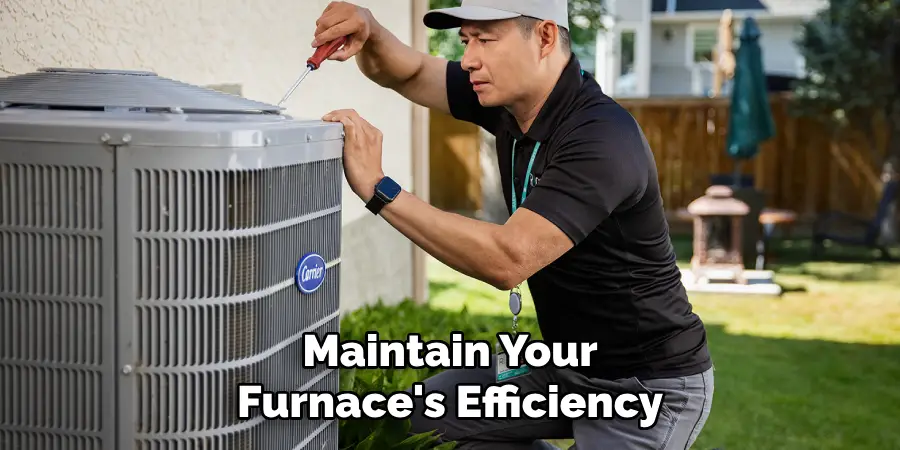
In such cases, it’s beneficial to consult an HVAC professional who can diagnose and address these deeper issues. Solutions may involve cleaning ductwork, installing air purifiers, or identifying sources of indoor pollution, ultimately helping to maintain your furnace’s efficiency and improve your home’s air quality.
Conclusion
The essence of regular furnace filter maintenance cannot be overstated when it comes to optimal system performance and ensuring premium indoor air quality. With the detailed guidance provided, including “how to locate furnace filter,” clean, and replace it, homeowners are well-equipped to handle this essential task with confidence and ease.
Adhering to these practices elevates air quality within your living spaces and substantially mitigates health risks associated with airborne contaminants. Furthermore, the positive ripple effect of diligent filter maintenance extends to financial savings through reduced energy bills. It elongates the lifespan of your furnace by preventing unnecessary strain on the system.
Proper furnace filter upkeep essentially lays the foundation for a home environment that is not just comfortable but also conducive to good health and well-being. It demonstrates a cost-effective way to contribute significantly to your furnace’s efficiency, sparing homeowners from avoidable expenses linked to HVAC repairs or early replacements.
As illustrated in this guide, you endorse a commitment to a healthier, more energy-efficient, and ultimately, more comfortable home environment by taking proactive steps in maintaining your HVAC system.

